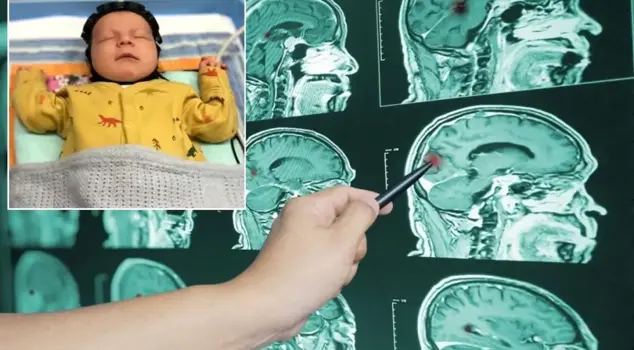
07.11.2025 21:50
Scientists have developed a special cap that can detect brain damage occurring at birth. The scanning cap, which uses light and ultrasound to monitor the brains of newborns, is said by researchers to be a world first.
Experts from the University of Cambridge in England have developed a new technology to image newborns' brains with high precision.
The cap, tested on a three-week-old baby named "Theo," resembles a swimmer's cap. With the cap equipped with ultrasound and optical tomography technologies, the oxygen levels in babies' brains can be monitored with great accuracy.
Thanks to the technology called "FUSION," potential brain damage in newborns can be detected early.
PREVENTING LIFELONG DISABILITIES IN BABIES
Hypoxia, which occurs when the brain does not receive enough oxygen during birth, is among the causes that can lead to lifelong disabilities in babies. This condition can also lead to issues such as epilepsy or cerebral palsy.
THE GOAL IS EARLY DETECTION
Current monitoring methods are insufficient to predict the long-term effects of damage. The aim is to initiate treatment and supportive interventions more quickly with early detection. Scientists conducting trials aim to reduce the cost of the cap.
EXPLAINED HOW THE CAP WORKS
Dr. Faure explained how the cap works by stating, "Light sensors monitor the oxygen changes on the surface of the brain. This method is called 'high-density diffuse optical tomography.' Functional ultrasound allows us to visualize small blood vessels deep within the brain."
Another important feature of the device is its portability. This way, babies can be monitored regularly in the comfort of their own cribs.
"PROVIDES A SERIES OF ADVANTAGES"
Consultant neurosurgeon Dr. Alexis Joannides believes that the device could have a series of advantages over traditional MRI (magnetic resonance imaging) or CUS (cranial ultrasound) scans.
Joannides announced that MRI has two fundamental limitations: "The first is the difficulty of finding the cost and scanning time. The second is that you have to take the baby to a noisy scanner, wait for about 20 minutes, and then bring them back. This makes it almost impossible to perform a series of consecutive scans. However, the brain changes every day in the first weeks; being able to conduct regular tests would be incredibly valuable."